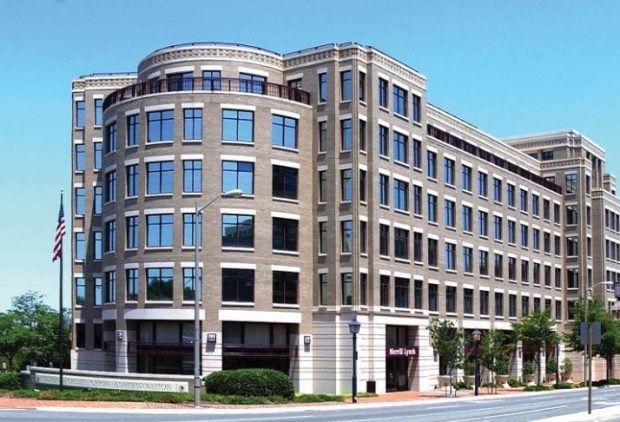WASHINGTON — As the fight over card interchange legislation heats up in Congress, credit union staff and volunteers may find themselves awash in conflicting claims about the source of noninterest card income. To provide a greater understanding, Credit Union Times is providing a primer on some of the card interchange issues.
First, the most basic debate over who actually pays card interchange must be clear. Retail groups lobbying the issue often claim that card interchange is a "hidden tax" on consumers that retailers must pay to the card brands. Actually, retailers don't pay card interchange to the card brands. They negotiate the rate they will pay with the financial institution or card processor who enables them to accept card payments and pay the "merchant discount" rate, which includes interchange among other things. This rate is of the same sort of cost of doing business that a merchant might pay as a cost for accepting either cash or checks, the card brands contend.
Further, a 2005 report from the Aite Group, a well-known financial consultancy, pointed out that the cost of card interchange is only one part of an overall card fee structure, which it dubbed the merchant service charge. When compared at this broader, MSC level, Aite contended, merchants in the U.S. pay the same overall rate as they do in Britain and one of the lowest overall rates in the world, 1.55%. Only Denmark and France have lower overall MSC rates, Aite said.
Recommended For You
Second, merchants can and do negotiate better merchant discount rates. According to the Federal Reserve, there are roughly 2,500 banks or other financial institutions in the U.S. and an unknown number of card processors willing to help a U.S. business accept card payments. Merchants are free to pick and choose and negotiate among these for the best rates.
The card brands also point out that merchants can adopt different strategies when it comes to cards. They can refuse to take them, for example, or offer incentives to consumers for using cash or checks. Merchants as whole have not done this, the card brands said, largely because they recognize that consumers like paying with cards and because the other forms of payment also carry their own costs.
For their part, the retail association claim that dominance of the Visa and MasterCard brands means they would seriously undercut their competitive position if they stopped taking them.
Third, retail associations argue that credit card interchange has a disproportionate impact on small- and medium-sized businesses, both because their card transaction volume precludes them from negotiating the lowest rates and their lower sales volume means an overall piece smaller pie.
The card brands admit that smaller businesses pay a proportionally higher rate of card interchange, but they add that small merchants also stand to reap bigger benefits from the ability to accept cards. A small business with a smaller part of the market also stands to benefit the most by having access to the larger pool of customers who want to use cards to make payments.
Fourth, merchants often deny that at least one of the bills currently in the congressional hopper will fix prices for card interchange. But the card brands counter that such a cap would, effectively, do just that.
The card brands maintain that the Credit Card Fair Fee Act of 2008 would create a three-person panel whose judgment would replace that of the thousands of merchant negotiations with their acquiring banks. The panel members would not necessarily have ever issued cards or competed in the marketplace before.
Fifth, the Aite Group maintains that the retailers are "barking up the wrong tree" when they blame the card brands for the steadily rising interchange rates. Paradoxically, Aite points out, the real culprit is the relatively strong competition among processors for the issuers' business.
Unlike other countries' card industries, the U.S. card industry has several credit and debit card processing networks, all competing for issuers' business and this, Aite maintained, accounts for the rising interchange rates as the networks–even when that might mean that the cost for merchants goes up.
"Merchant's complaints against the constant increases in interchange are legitimate," Aite wrote in its 2005 report, Five Misconceptions About Interchange in America. "By pointing their finger at the supposedly monopolistic organization of the bankcard industry, they bark up the wrong tree, however. Merchants need to recognize that the real culprit is competition between the networks. If merchants want regulators to intervene and cap the interchange as other countries have done, they will, in essence, be pitching for less competition among networks and issuers."
Finally, the retailers frequently argue that capping interchange will benefit consumers, but the card brands counter that in countries where this has been tried, it has been the merchants that have benefited.
In Australia, for example, regulators have failed to show that capping interchange rates has lowered prices to consumers. All that has happened is that retailers have pocketed the savings of roughly 40 basis points in their overall card costs, the card brands argued.
Aite generally agreed, noting that not only would there likely not be any particular savings to consumers, there could be unintended consequences. For example, large issuers could break away from the card brands in order avoid the cap on interchange and thus offer elite card processing and services to merchants willing to pay for it. Or, what some have said is more likely, issuers might attach fees to credit and debit cards in an attempt to recapture some of the lost interchange income. In the case of debit cards, these fees could effectively do away with free checking.
Rising Gas Prices Focusing More Attention On the Cost of Card Interchange Fees
WASHINGTON — Independent gas stations are one place where merchant acquirers might put an interchange cap in place or gas stations could stop taking cards due to the costs of card interchange.
Rising fuel prices have both boosted what consumers pay at the pump and what gas stations accepting credit cards must pay in card interchange.
Gas station trade associations maintain that gas station operators, particularly independents, mark up their gas 10 cents to 12 cents per gallon and, at an average interchange rate of 2%, gas stations have watched card interchange eat into their profits. At $3.00 per gallon, a station will pay six cents per gallon in card interchange, but at $4.00 card interchange rises to 8 cents per gallon. In California, where the average price of a gallon gas has hit $4.59, boosting the interchange price just over 9 cents per gallon.
Gas station owners have said the already high prices for gas effectively prevent them from raising prices to cover the interchange cost since consumers will shun stations with as little as penny per gallon difference over what consumers believe to be the lowest price.
Several trade associations told reporters over the weekend of June 21-22 that they may advise their stations to stop accepting cards carrying the Visa or MasterCard logo.
© 2025 ALM Global, LLC, All Rights Reserved. Request academic re-use from www.copyright.com. All other uses, submit a request to [email protected]. For more information visit Asset & Logo Licensing.







